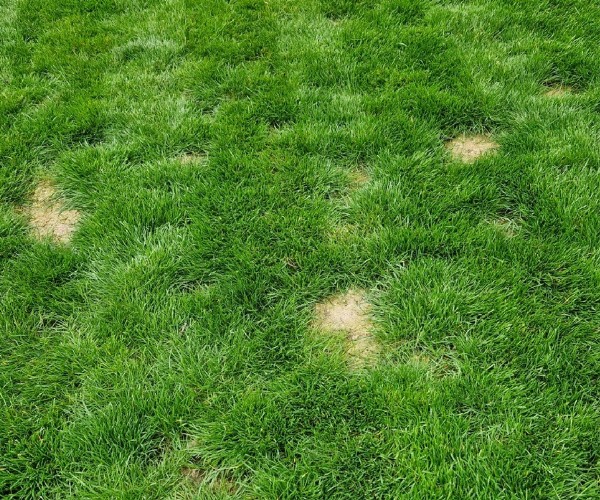
June 21, 2023 Summer Tips
We hate the thought of our customers looking out onto their gorgeous green grass and being shocked by dry, brown patches in the middle of the lawn. Where did they spring from? It’s natural to assume your turf has died, but before you start grieving for your grass, it’s important to check whether the dry patch is dead or just dormant. For the latter, the secret is knowing how to revive it!
As we said, it’s important to know the difference between dead and dormant grass as this will determine how you can repair your lawn. You also don’t want to waste your time on dead turf or completely right off sleeping grass.
To spot dry grass, it normally has a straw-like colour and appears in different shapes and places across your garden. It may be a home for weeds too, which although annoying, is a good sign there’s still some life in there.
If you regularly water the area, dry grass will also show signs of activity such as water seeping into the soil. Whereas dead grass will not absorb any water and you won’t see any regrowth, even after a couple of weeks.
Dry grass patches are areas of unhealthy grass. Over time, the soil in this area has begun to repel water rather than absorb it. This means the grass roots embedded within that section cannot soak up the water and nutrients they need. Eventually leading to the grass dying and the soil becoming bone-dry.
There are lots of reasons for dry areas throughout your lawn. Some of these are caused by human intervention (unintentionally, of course) or nature. Common causes of dry brown patches include:
This may seem obvious but there are lots of signs indicating the start of dry grass. If you can spot these and treat the area early on, you’ll save yourself a lot of time, stress and money later. Symptoms of dry grass include:
The good news is, once you’ve spotted the patch, there’s plenty you can do to bring your grass back to life. Here are our 6 top tips to fix dry grass:
It all depends on whether your grass has dry patches, is turning brown or is completely dead. If your grass is patchy or brown then there are several methods, as mentioned above, that can help revive your lawn. The best way to avoid a completely dead lawn is to have top quality turf in the first place.
Ideally, as soon as you spot them! They don’t look great dotted around your lawn, and they can become a tricky problem to resolve if left too long. When fixing dry lawns, aim for a cool, wet day – which luckily you won’t be short of in the UK! Aim for a rainy day too as it’ll save you a job watering! Extreme weather conditions such as freezing winters or scorching summers won’t provide the best results. So, focus on spring or autumn and choose the right fertiliser for the season.
If you’re unsure how to restore your turf from dry and dull to luscious and lovely, get in touch with the George Davies Team. We can support you with the right treatment for dry patches as well as fertiliser advice or brand-new turf if needed.
CALL US NOW ON 01234 818 253